Labneh is a velvety masterpiece with roots deeply embedded in the sun-soaked landscapes of the Middle East, enticing taste buds for centuries. This cherished delicacy has undergone a compassionate transformation, becoming a creamy, completely plant-based miracle!
Labneh, originating from the Arabic word "laban," meaning "to milk," holds a cherished place in the heart of Middle Eastern cuisine. This time-honored treasure is traditionally crafted by straining yogurt, resulting in a delectable, creamy texture and a tangy flavor.
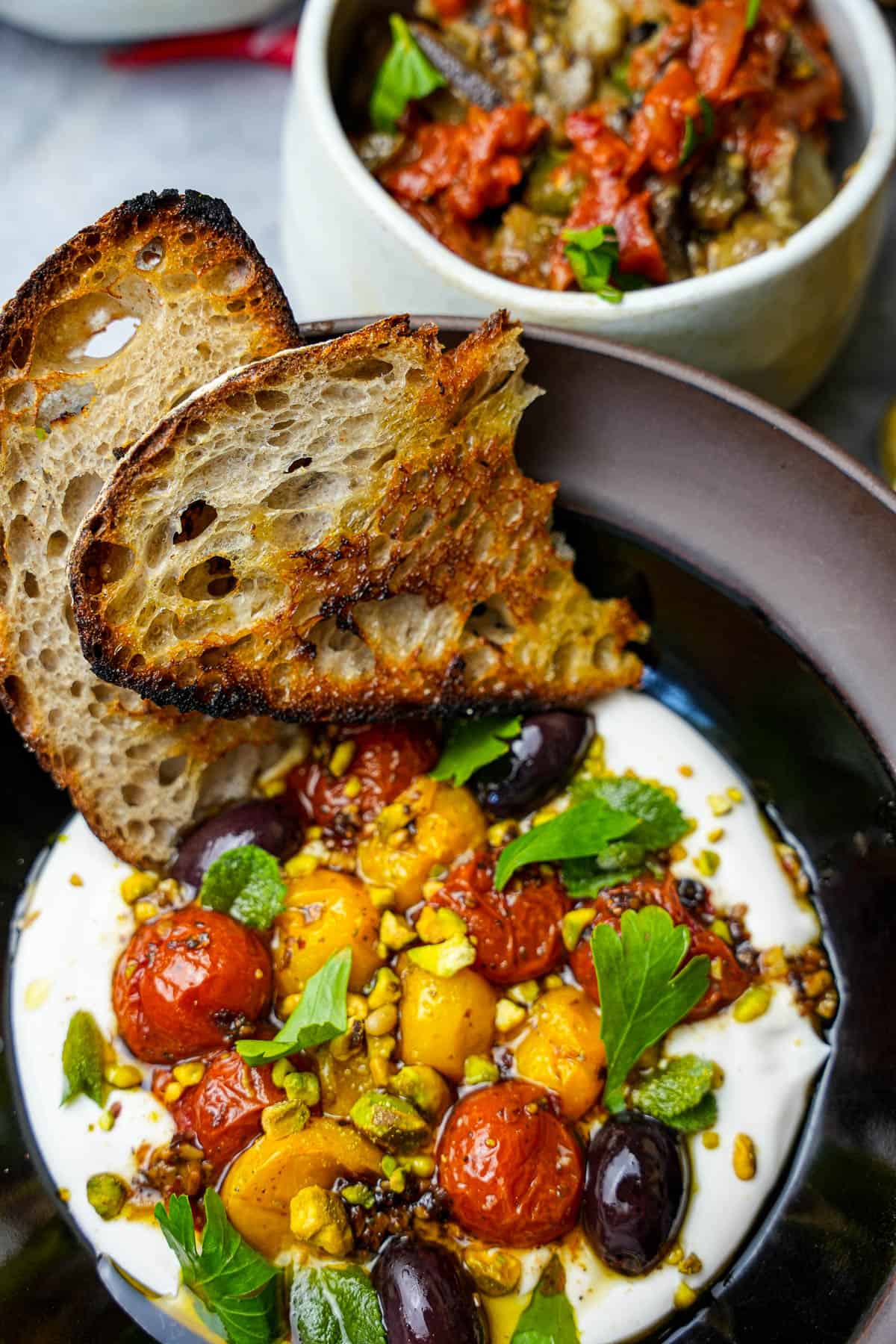
This creamy, tangy, heavenly soft cheese is delicious when served with my baharat roasted oyster mushroom shawarma drizzled with tarator (Lebanese tahini dressing). It steals the show when paired with seitan kofta kebabs on freshly grilled Arabic Pita Bread or flaky Moroccan Msemen. Serve it as a mezze with my herby, tangy taboule, Moroccan stewed white beans, or Turkish bulgar pilavi. Labneh is a culinary chameleon that blends seamlessly with Mediterranean flavors and dishes from all over the Middle East.
Labneh finds its place in everyday meals, be it spreading on warm, freshly baked bread, or as a canvas for drizzles of golden olive oil, aromatic herbs, roasted vegetables, and spices. Labneh embodies the spirit of togetherness and hospitality, a symbol of shared experiences and the pleasures of gathering around a table.
With each luxurious spoonful, you connect with a centuries-old legacy, honoring the cultural roots and embracing a future where culinary excellence coexists harmoniously with compassion and inclusivity. Grab some cheesecloth and a wooden spoon, and let’s make this easy-as-heck ambrosia.
Jump to:
🥰Why you are going to adore the ever-loving heck outta this recipe
👉This is an EASY introduction to home vegan cheese making! If you want to learn more about making your favorite cheese without forcing cute cows and goats to do it for you, check out the Vegan Cheese Making Class I have on my webby-webbity-website.
😮You don't need much! The base labneh recipe here uses JUST TWO INGREDIENTS! It follows the traditional labneh-making method, rather than cheating and mixing in a bunch of pureed cashews or whatever. The topping recipe is really tasty and simple AF.
👍It just gets BETTER with more time. If you want a thicker cheesier labneh, you can keep draining it for a few days and you will get a soft, almost sliceable cheese.
🥛What is Labneh, and where is it eaten?
Labneh is a simple homemade cheese made from straining lightly salted yogurt, to remove excess water. The straining and drying process accentuates the sharpness of the yogurt, giving it a tangy and rich flavor. There are a few different names and ways of serving labneh in different regions. Here are a few that stand out:
Lebanese Labneh Baladi
In Lebanon, their version of Labneh is often served as a mezze, drizzled with olive oil and sprinkled with za'atar, served with fresh bread, or used as a base for dips like "Labneh with Garlic" or "Labneh with Mint" to enhance its aromatic qualities.
Syrian Jameed
Jameed is made by drying strained yogurt balls in the sun until they solidify, and then rehydrating them in water or broth. This reconstituted labneh is used as a tangy ingredient in traditional dishes like the iconic Jordanian "Mansaf," a rich lamb and rice dish served with a labneh-based sauce.
Palestinian Labaneh or Labane
In Palestine, Labaneh is strained and formed into small balls that are stored in olive oil to preserve them. It is commonly served with freshly baked pita bread, drizzled with olive oil, and enjoyed with a sprinkle of za'atar or a side of tangy pickles.
Greek Yogurt
Similar to labneh, Greek Yogurt is made by straining whole milk yogurt to remove excess liquid, resulting in a thick, fatty, and creamy consistency. It is commonly enjoyed as a breakfast staple, paired with honey and nuts, or incorporated into savory dishes and desserts.
Israeli Labaneh or Labane
In Israel, labaneh is enjoyed as part of a mezze platter or as a spread on sandwiches. It is often served with fresh bread, drizzled with olive oil, and garnished with herbs such as parsley or mint. Due to Israel's large Syrian Jewish population, it’s not uncommon to see Labneh served in Israel for breakfast alongside Syrian dishes like Muhammara, a walnut and red pepper spread made with pomegranate molasses. Sounds good? It is!
🧈Notable ingredients and substitutions
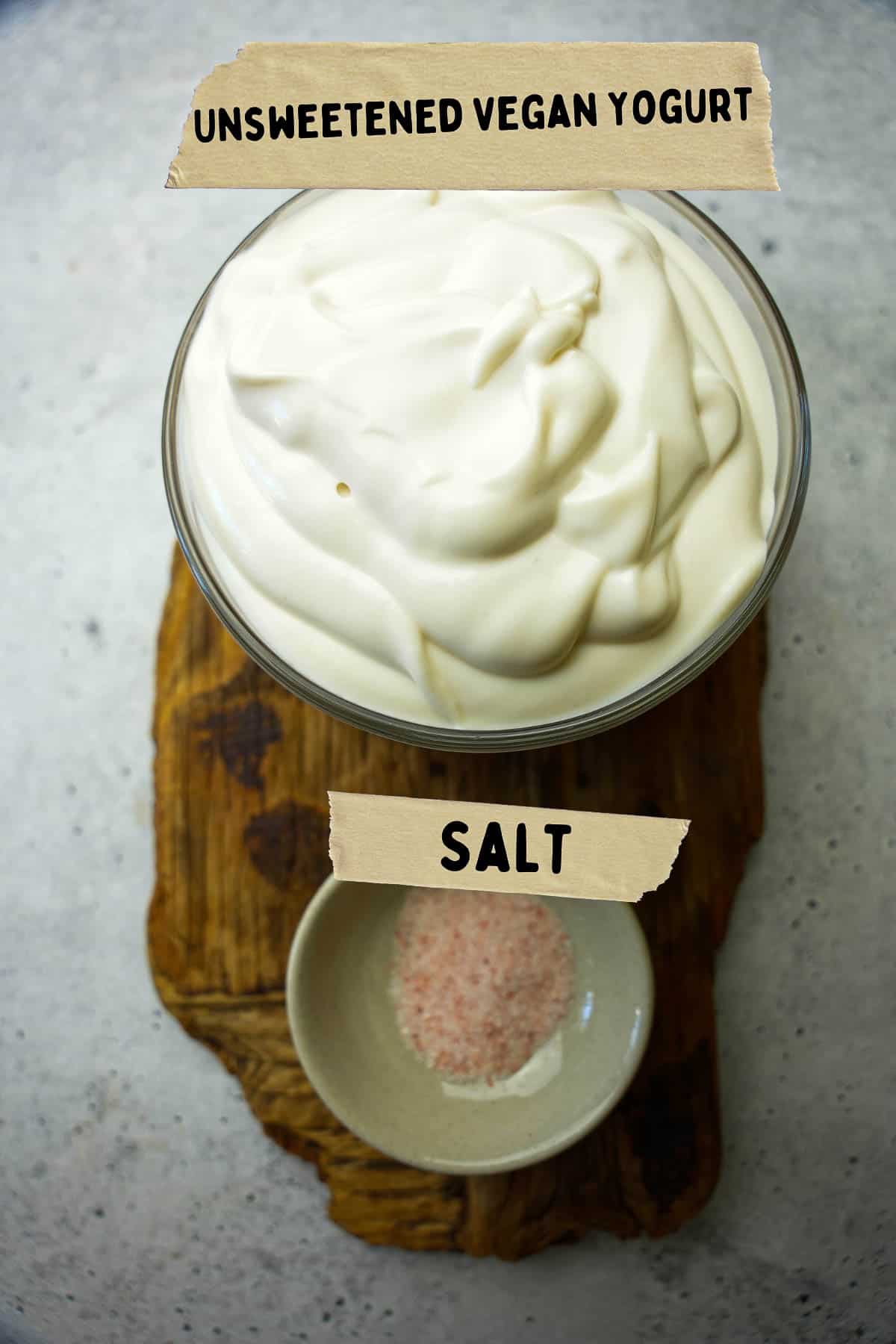
Unsweetened plant-based yogurt: I have tried a lot of yogurts for making this recipe, and my favorite is the unsweetened original Kite Hill almond milk yogurt. I use it to make my vegan butter chicken as well as my Turkish mint and yogurt soup.nIt works better and has a better flavor than Kite Hill’s Greek-style yogurt. This recipe also works well with Forager (a cashew cream based yogurt) and So Delicious (which has coconut and soy based varieties). Just about anything that is full-fat, unflavored and unsweetened will work. While it CAN be done, I am not a fan of using coconut milk yogurt for labneh. I just don’t feel like it creates the same texture or flavor.
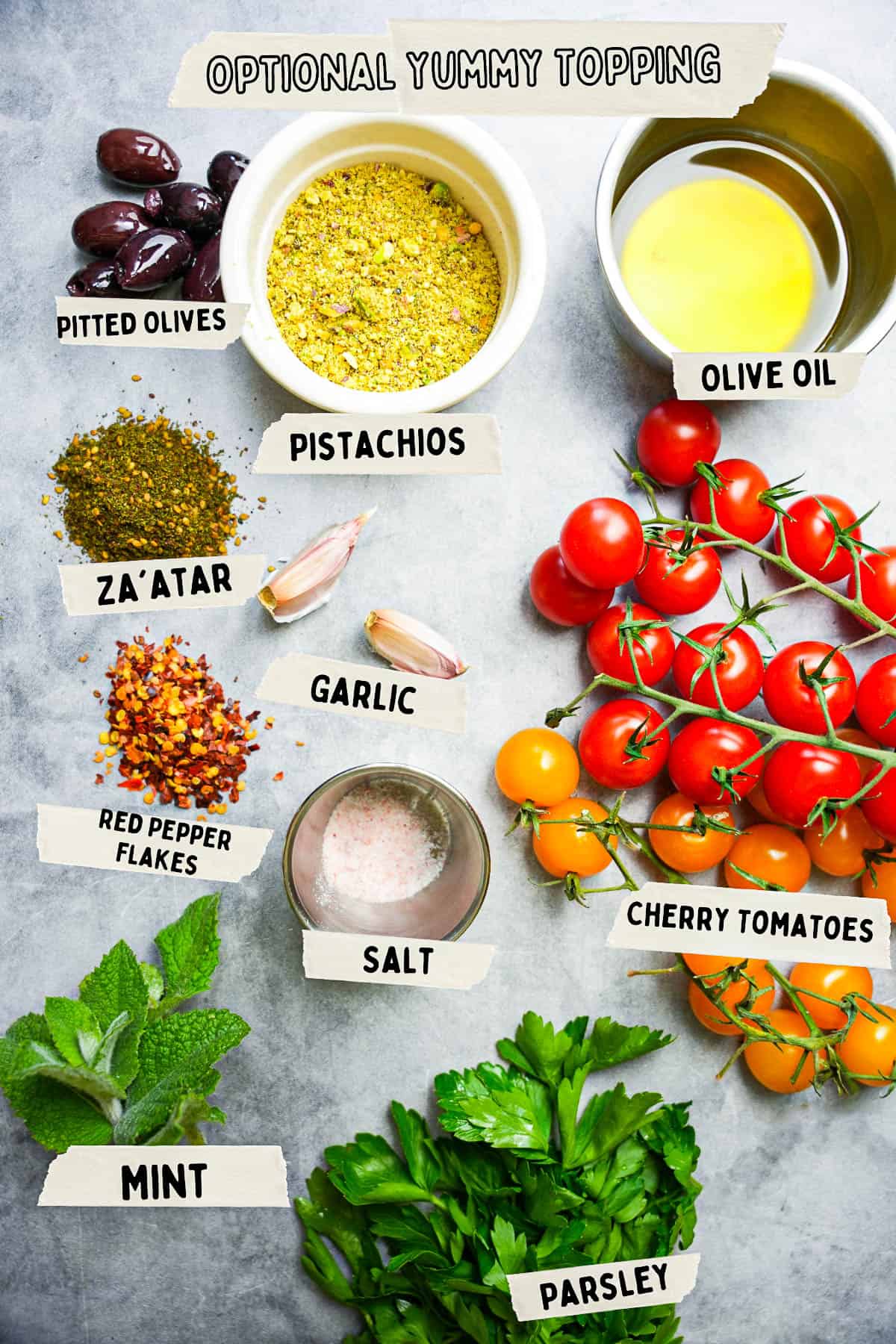
Za’atar: Za'atar is a versatile Middle Eastern spice blend that adds a unique and aromatic flavor to dishes. It is a combination of sesame seeds, sumac, and other herbs and spices, varying slightly in composition depending on the region. One of the things that gives za’atar its unique flavor is the variety of thyme used in making it. It is made with either flowering hyssop thyme or Lebanese thyme (Thymbra spicata).
To make a small batch of za'atar at home, combine 1 tablespoon of dried thyme, 1 tablespoon of sesame seeds (toasted for added flavor, if desired), 1 teaspoon of ground sumac, a pinch of salt, and a pinch of ground cumin. Alternatively, you can leave the salt out, and use CURED sumac powder, which has a fantastic salty, vibrant flavor. Mix the ingredients together thoroughly, and adjust the spice proportions according to your taste.
Green yummy things: Pistachios, mint, and parsley serve as a garnish for labneh, adding a delightful crunch, and cooling bitter flavors that nicely balance and bring life to the creamy and tangy spread. Their vibrant green color also creates a visual constant. When drizzled with olive oil, the garnishes pop and make humble labneh look sophisticated.
📖Step-by-step instructions
You wanna see how this yummy stuff gets made? I will walk you through the whole process. Or you can follow along with the easy-to-print recipe card towards the bottom of this page.

Step 1
In a small bowl, thoroughly mix together the yogurt and salt.
For a tangier flavor, consider adding a squeeze of lemon juice or a sprinkle of lemon zest to the yogurt mixture before chilling.
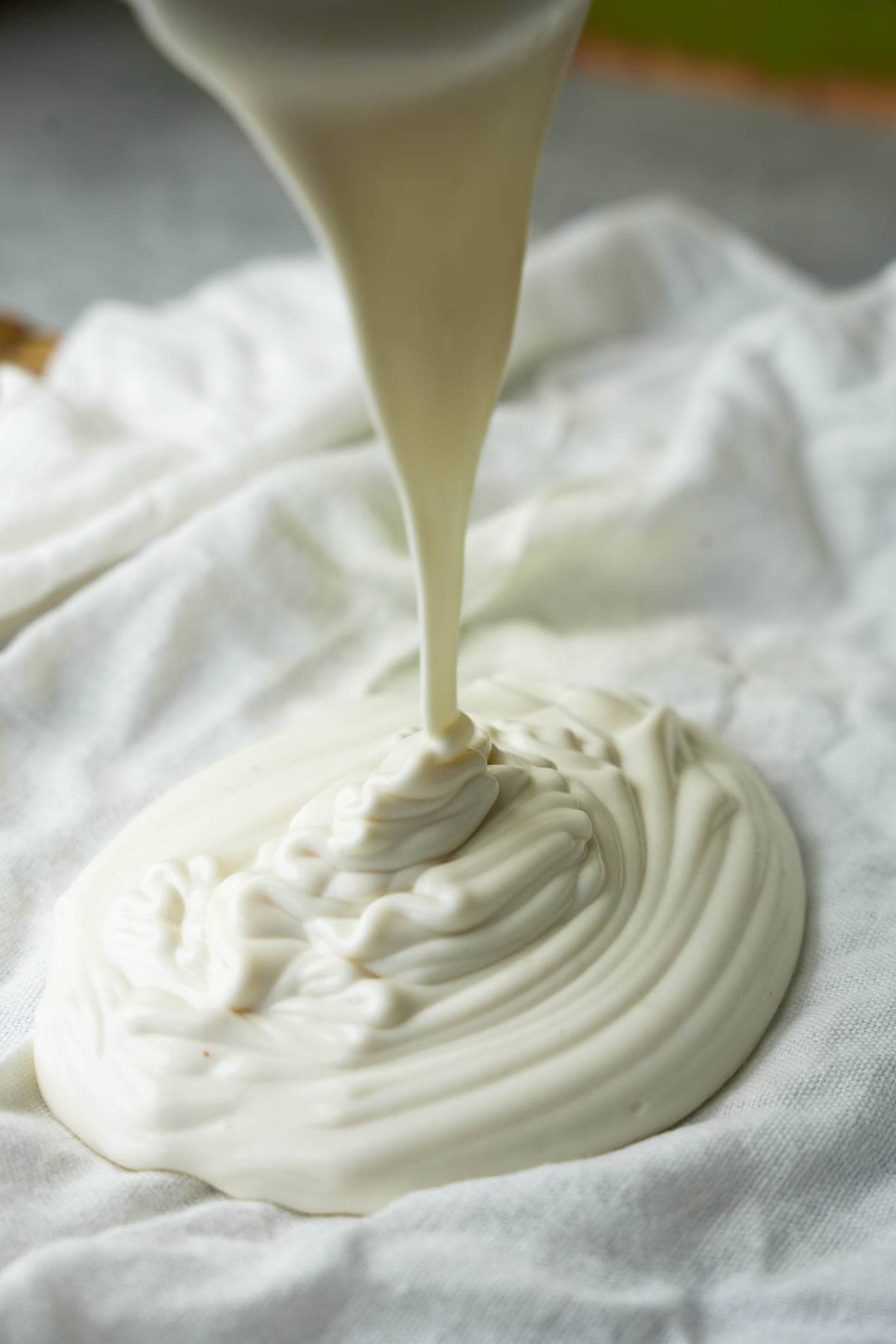
Step 2
Prepare a layer of cheesecloth measuring approximately 12 by 18 inches (30 by 45 cm.) on a clean surface. Scoop the yogurt mixture onto the center of the cheesecloth, ensuring there is enough space around the edges for the labneh to hang freely.

Step 3
Gather the edges of the cheesecloth and securely tie it around a wooden spoon, creating a suspended bundle of labneh. Alternatively, if you have a mesh strainer, place the cheesecloth-wrapped yogurt in it and suspend it over a bowl.

Step 4
Position the wooden spoon or strainer setup over a medium bowl, ensuring the labneh hangs in the center without touching the bottom.
Tip: If you don't have a deep enough bowl, you can make sure the cheesecloth is suspended above the bottom of the bowl by adding some objects between the rim of the bowl and the wooden spoon to act as spacers. Anything solid you have lying around should work.
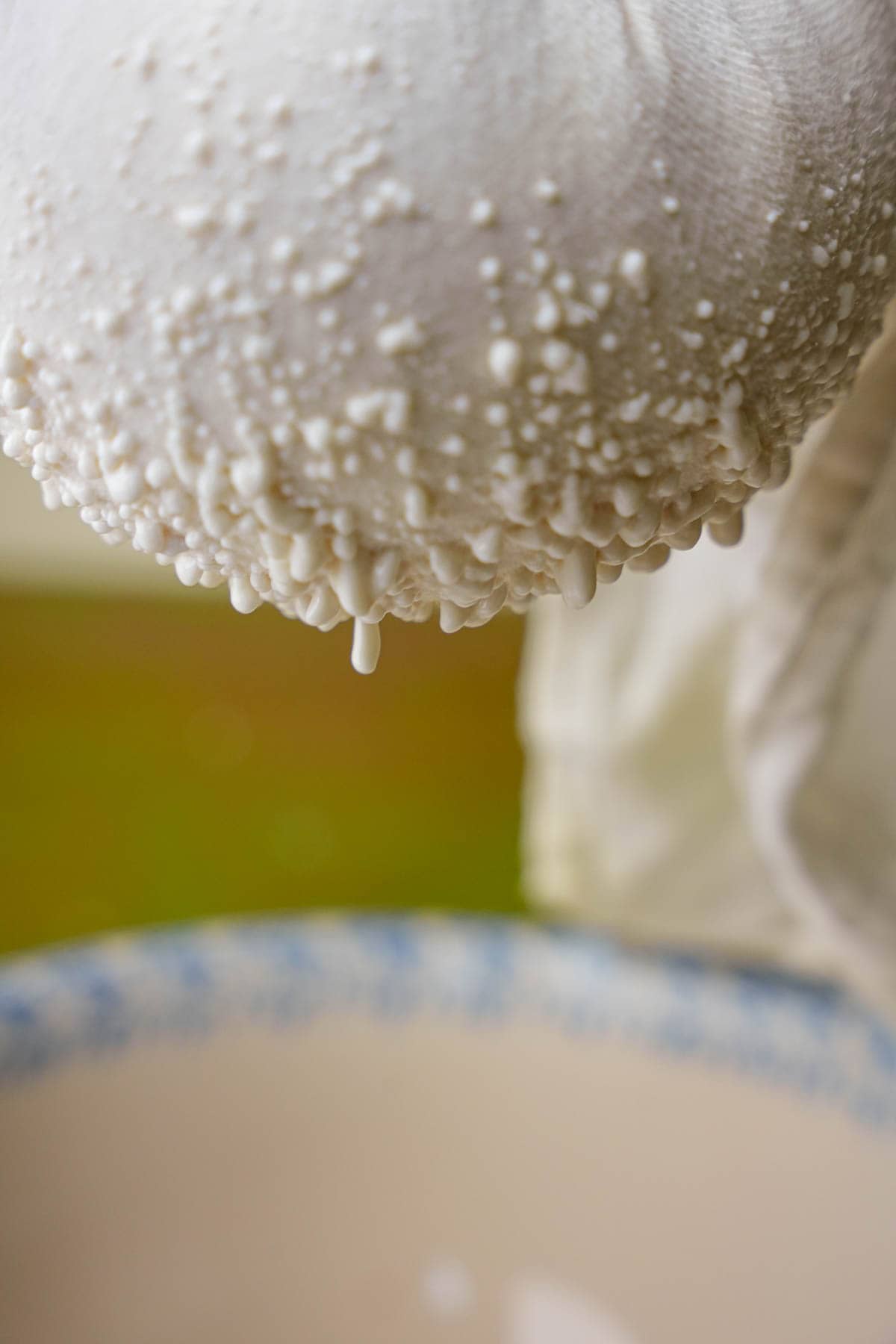
Step 5
Place the setup in the refrigerator and allow the labneh to chill for approximately 24 hours.
If a thicker labneh consistency is desired, you can extend the chilling time by a few hours or up to a total of three days.
After the desired chilling time, remove the labneh from the cheesecloth or strainer and transfer it to a serving dish or storage container.
To make the optional topping and serve the labneh:

Step 6
Preheat the oven to 350 degrees F (175 degrees C). In a mixing bowl, combine olive oil, tomatoes, salt, parsley, garlic, and za'atar, ensuring they are well mixed.

Step 7
Spread the mixture evenly on a half-sheet baking pan.
Roast the tomatoes in the preheated oven for approximately 10 minutes. Then, using tongs or a spatula, flip the tomatoes and continue baking for an additional 8-10 minutes until they split and the skins wrinkle.

Step 8
Spread the labneh in a bowl or on a plate and top it with the roasted tomatoes and serve with some Turkish stuffed cabbage (if ya want)!
Optionally, garnish with parsley, mint, olives, pistachios, and a drizzle of olive oil for added flavor and visual contrast.
🍽️Serving Ideas
If you don't want to bother with the yummy roasted tomato topping recipe I have included, you can easily and quickly garnish the labneh with a little olive oil, herbs and pistachios.
Here are a few different styles of cuisine that labneh compliments beautifully:
Include labneh as a condiment along side cig kofte, mercimek kofte, bulgar pilavi, and Turkish Şakşuka.
Smear freshly strained labneh on flaky hot msemen (Turkish bread), and eat it alongside Moroccan classics like loubia (stewed white beans), or Harira, a hearty chickpea, lentil, and tomato soup with herbs and vermicelli.
Finish the meal with a slice (or two, or five) of pistachio baklava with rosewater syrup.

👉Top tip
If the yogurt hasn’t thickened enough, continue to let it strain. Ensure the cloth you use is porous enough to release water from the yogurt. Cheesecloth or a clean, very lightweight kitchen towel is best. You can drain the yogurt for up to three days.
Depending on the density of your cheesecloth, you may need to double it up so the yogurt doesn't all just pour right through. Another option is to use a nut milk bag.
🤷♀️Recipe FAQs
Labneh, in its traditional form, is gluten-free. Labneh is made by straining yogurt to remove the whey, and extra water resulting in a thick and creamy consistency. The only thing that might not be gluten-free is if the labneh is served with a crispy store-bought fried topping, such as shallots.
Some fried toppings are coated in flour before frying to make them crispier. Keep this in mind if you order labneh from a restaurant, and be sure to ask before ordering if you have an allergy or sensitivity to gluten.
Transfer your labneh into a clean, airtight container. Ensure the container is large enough to accommodate the labneh with a tiny bit of room for expansion because it is actively fermenting.
If you strained the yogurt long enough that it is semi-solid labneh, gently pat it dry withpaper towel to remove any excess moisture before transferring it to the container.
Pour a thin layer of olive oil over the surface of the labneh. The oil acts as a protective barrier, preventing air from reaching the labneh and helping to maintain its freshness.
Seal the container tightly to prevent any air or moisture from entering. Store the labneh in the refrigerator. The cool temperature will help slow the fermentation process and keep the labneh fresh.
Enjoy the labneh within ten days for optimal flavor and quality. Over time, the labneh may continue to thicken and will eventually become too tangy.
✌️My favey dishes to serve with Labneh:
Say Hi on Social! 👋
Follow me on Instagram & Facebook for more recipes.
❤️Love this recipe? It helps me out greatly if you leave a 5-star 🌟🌟🌟🌟🌟rating in the recipe card below and maybe even leave me a lovey-dovey comment too!
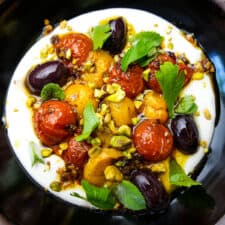
Labneh (plant-based strained yogurt cheese)
Equipment
- Cheesecloth
Ingredients
Labneh
- 16 oz. or 454 grams 2 cups unsweetened plant-based yogurt
- ½ teaspoon sea salt
Optional roasted tomato topping:
- 3 tablespoons extra virgin olive oil
- 2 cups cherry tomatoes
- ½ teaspoon sea salt
- ⅓ cup chopped fresh parsley
- 2 cloves garlic minced
- ½ teaspoon crushed red pepper flakes
- 2 teaspoons za'atar
Garnish
- ½ cup chopped fresh parsley and mint
- Olives
- Chopped pistachios
- Olive oil
Instructions
For the Labneh
- In a small bowl, combine the yogurt and salt, stirring until they are well mixed.
- For a tangier flavor, you can add a squeeze of lemon juice or a small amount of lemon zest to the yogurt mixture before chilling.
- Lay out a 12 by 18 inch (30 by 45 cm.) layer of cheesecloth.
- Scoop the yogurt mixture onto the cheesecloth, making sure to leave enough space for the labneh to hang freely.
- Gather the edges of the cheesecloth together and tie it securely around a wooden spoon.
- Position the wooden spoon across the top of a medium bowl, ensuring that the labneh hangs in the center but doesn't touch the bottom of the bowl. Otherwise, if you have a mesh strainer, place the cheesecloth-wrapped yogurt into it to suspend it over a bowl.
- Place the setup in the refrigerator and allow the labneh to chill for 24 hours.
- If you desire a thicker labneh, you can extend the chilling time by a few hours or even up to three days in total.
- After the desired chilling time, remove the labneh from the cheesecloth and transfer it to a serving dish or storage container.
For the optional toppings
- Preheat oven to 350 degrees F. (176.7 degrees C.)
- Combine the olive oil, tomatoes, salt, parsley, garlic, and za’atar I a mixing bowl, and then spread it out over the surface of a half-sheet baking pan.
- Roast the tomatoes for 10 minutes, and then flip them with tongs or a spatula, and bake for another 8-10 minutes until the tomatoes split and the skins wrinkle.
- Spread the labneh out into a bowl or plate, top with the roasted tomatoes, and garnish if desired with parsley, mint, olive, pistachios, and olive oil.



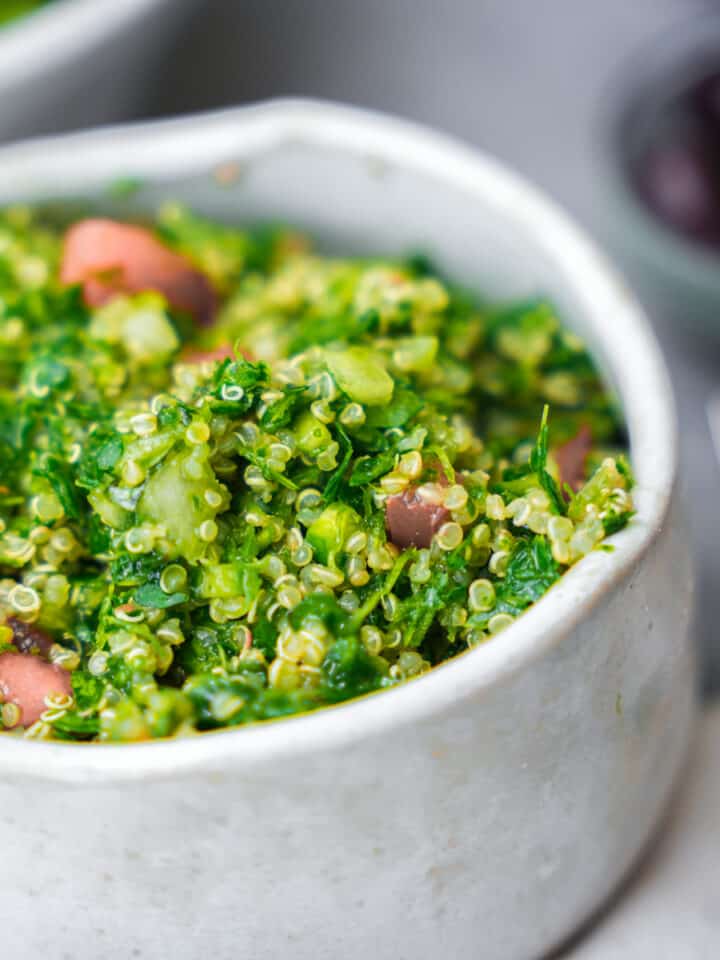
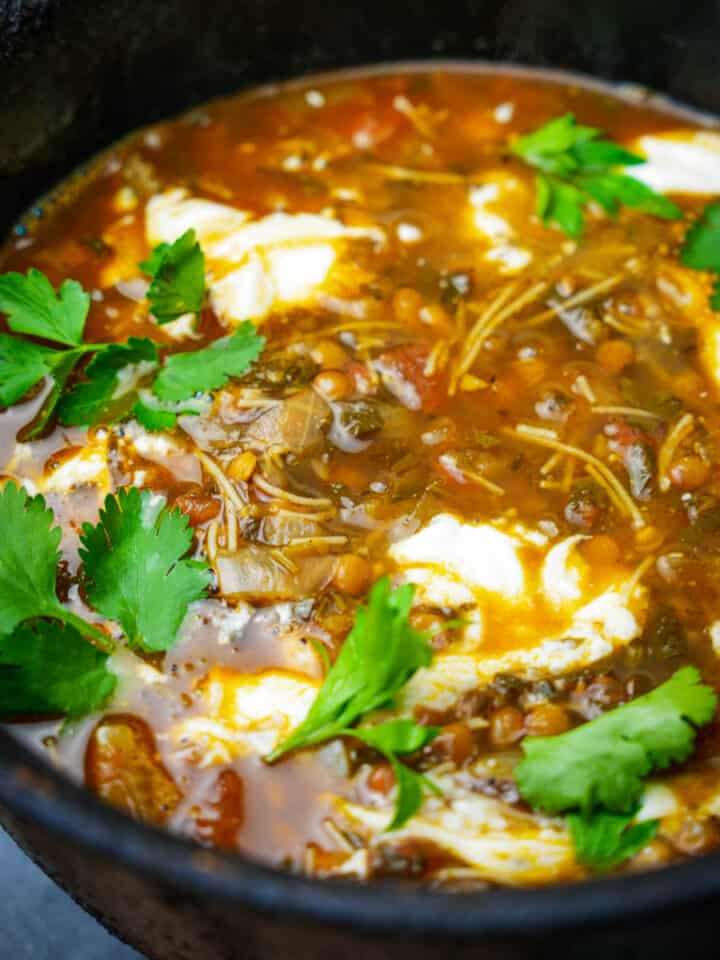
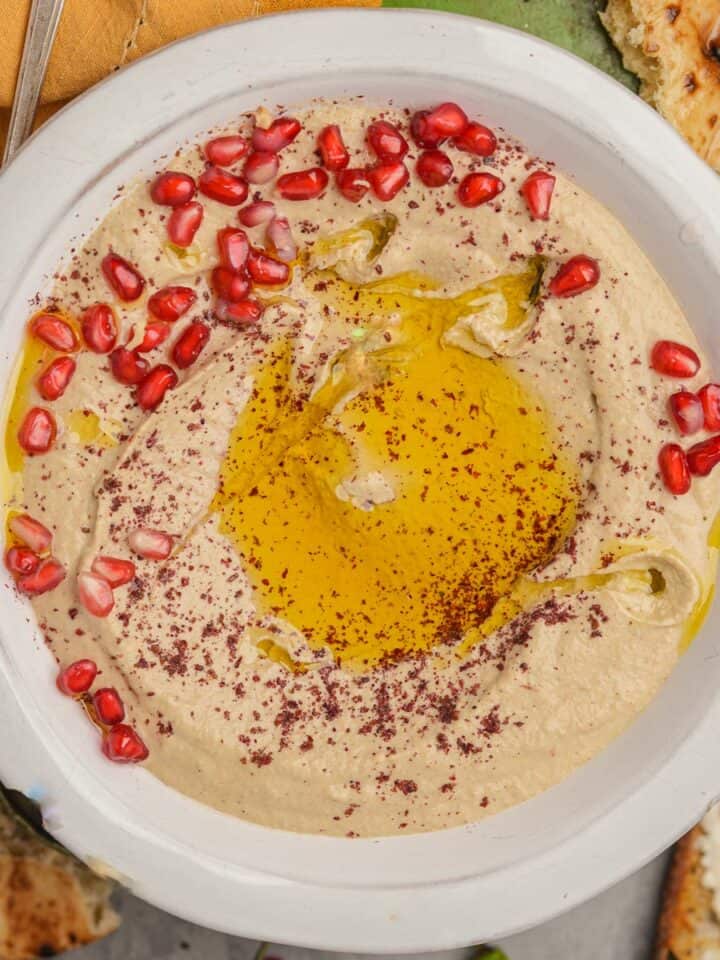


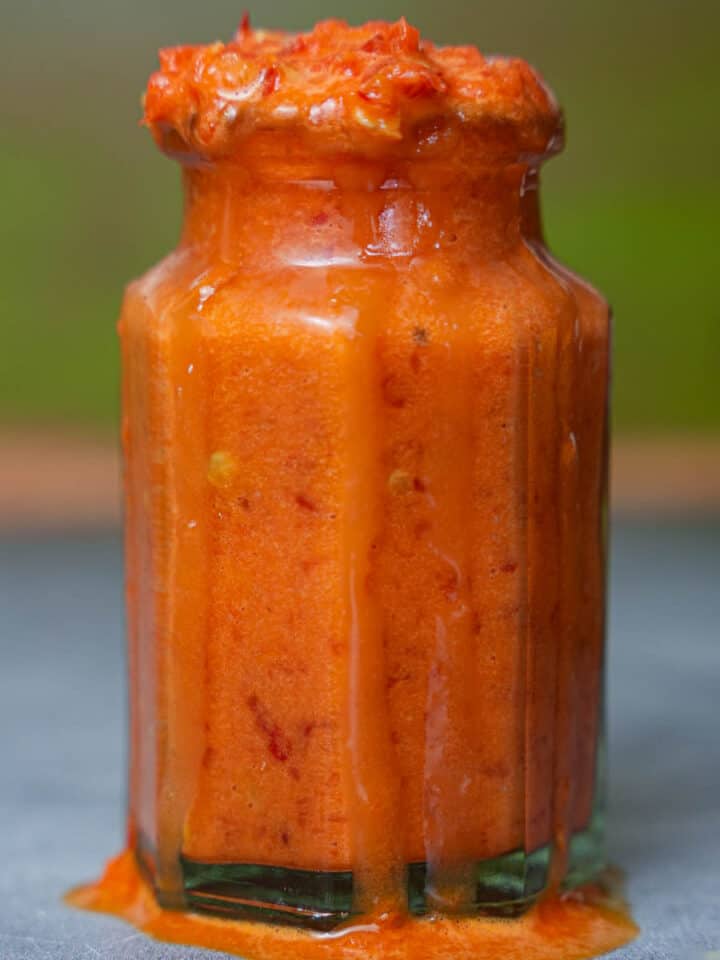

Cheryl
Rich and creamy, a delicious accompaniment to Msemen